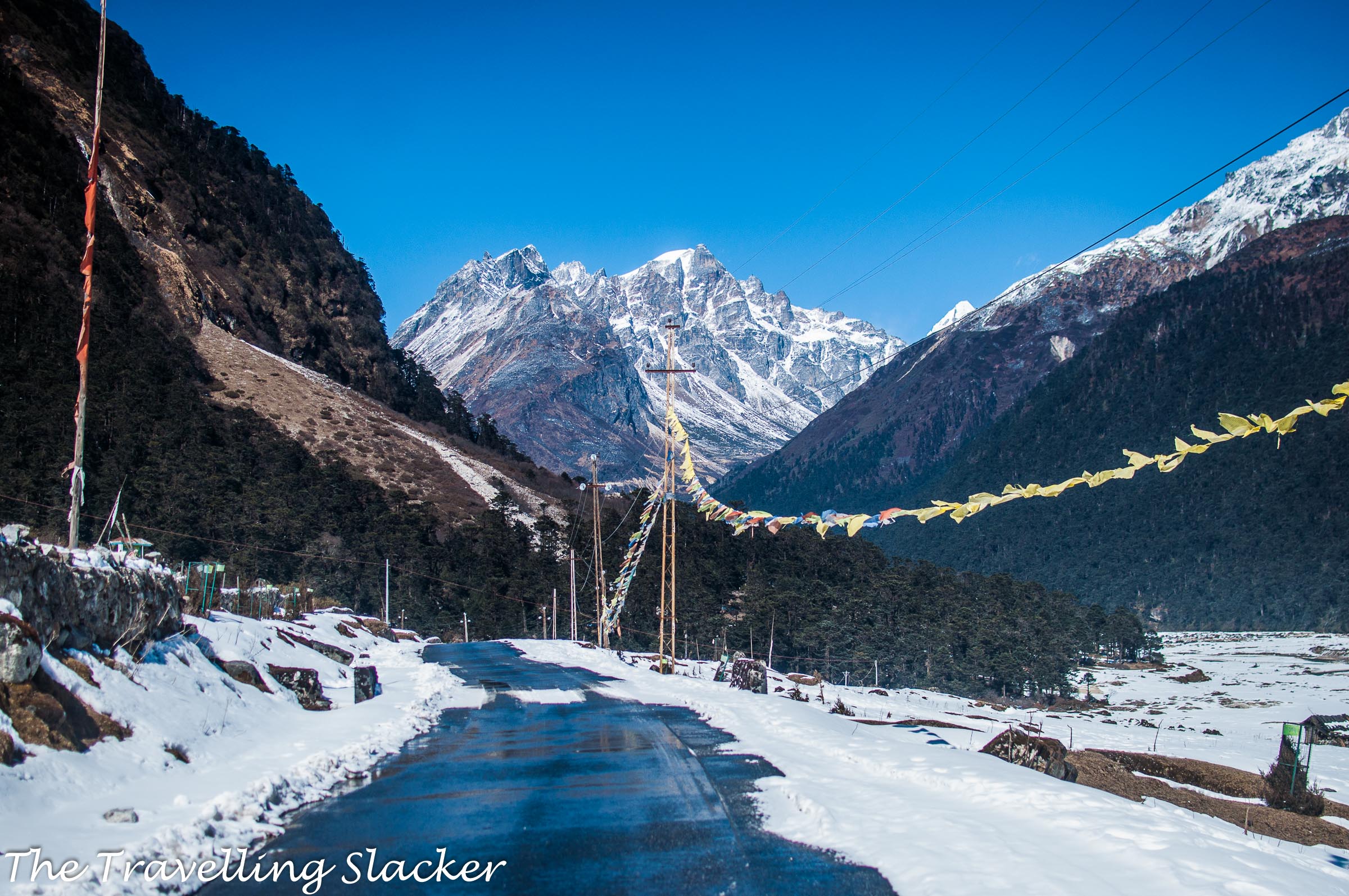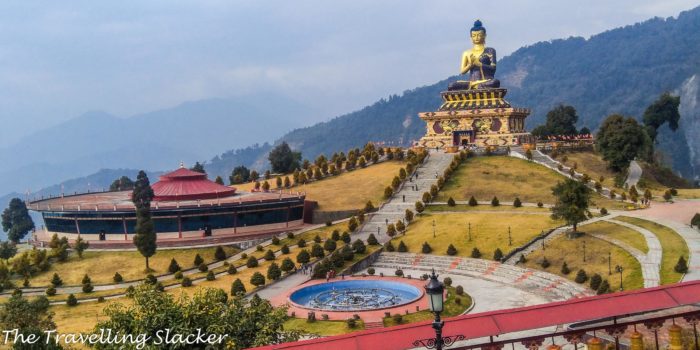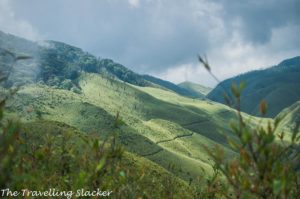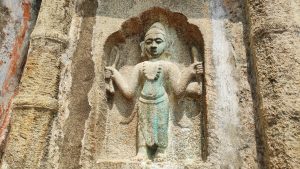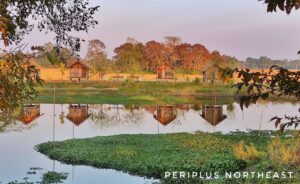Table of Contents
Understanding Sikkim
Sikkim is a tiny, landlocked Himalayan state surrounded by Nepal, Bhutan, China, and West Bengal. Sikkim may give you a culture shock to begin with as it feels like a different country. This is because it was indeed a different country till the 60s when they decided to merge with the Indian Union.
Naturally, the primary attraction here are the Himalayas. However, there is a vast difference between the lower hills on the Southern side bordering Darjeeling and the upper reaches on the North. Sikkim is primarily divided into four zones, namely East, West, South and North. You need to understand each region in order to explore the state properly.
East Sikkim
The most easily accessible part of the state, East Sikkim is also the administrative hub of the state-centred around Gangtok, the capital of Sikkim. It is the only big city in Sikkim and a tourist attraction itself. Many medieval Buddhist monasteries are located in and around the city. From here, people can travel to other areas of Sikkim.
West Sikkim
The western part of Sikkim is dominated by the Kanchenjunga ranges. It is bordered by Darjeeling and Nepal and is naturally considered a trekking paradise. It also has small hill stations such as Pelling, Yuksom, Rinchenpong, Uttarey etc, some of which are also major historical places as well as hubs of Buddhism. Major treks like Goechela, Dzongri, Varsey Rhododendron Trek etc start from here.
North Sikkim
The northern zone of Sikkim is perhaps the most coveted part of Sikkim. It borders Tibet and altitudes here are much higher. The surreal valley of flowers at Yumthang, as well as the high altitude lake of Gurudongmar & Tso Lhamo, are some of the best-known attractions here although it has much more to offer.
South Sikkim
South Sikkim is the smallest part, bordering Bengal. It is lower in altitude but even it has some popular hill stations such as Namchi and Ravangla, as well as the beautiful Temi Tea Garden known for its Temi Tea.
How to Reach Sikkim?
Sikkim is predominantly a hilly terrain, but the conditions of road are different in various places, North Sikkim roads being the roughest. During the monsoon season, driving becomes tricky and there are more chances of landslides and so it is the leanest season for tourists. Sikkim does not have any railway services and is best covered with private vehicles or shared sumos.
By Air
Until recently, Sikkim did not have an airport on its own. However, things have changed now and a new airport has been opened at Pakyong, near Gangtok. It has direct flights from Delhi, Kolkata, and Guwahati! Do note that the airport is around 30 KMs away from Gangtok. Otherwise, you always have Bagdogra Airport in Siliguri (West Bengal), which is 125 KMs from Gangtok and has served at the gateway to Sikkim so far.
By Train
Sikkim does not have any railway routes. So again, the nearest railway head is New Jalpaiguri (NJP) near Siliguri, West Bengal. NJP is well-connected with the major cities of India. From NJP, you will get private as well as shared cabs to Gangtok.
By Road
Sikkim is well connected to Siliguri in North Bengal. You will get regular buses and shared cars from the city of Siliguri, as well as the aforementioned Bagdogra Airport as well as NJP Railway Station.
Transportation within Sikkim
Although Sikkim does have bus connectivity within the state, from what I could see, they are not very frequent. Especially some of the remote regions of the North may not have buses at all. Most major destinations have shared cars. So, you need to fine out from where the shared cars leave to specific places. Most small towns will have only one place for this although a big city like Gangtok has many taxi stands and so you will have to figure out the one which is the base for the cars that you are looking for.
Accommodation in Sikkim
Sikkim has many accommodation options.
Backpacker Hostels
This is a new phenomenon and I only know of one backpacker hostel in Gangtok. I hope rest of the places figure it out soon.
Homestays
Homestays in Sikkim are the best options as you get to stay with a local family and experience locla culture. You can find them at the outskirts of major towns while there are some places such as Dzongu or Yuksom, which are dominated by homestays rathe rthan hotels.
Hotels & Resorts
Sikkim is a touristy place and there is no dearth of hotels and resorts in the main towns all over the state. From what I have seen, they tend to be a bit more expensive than most parts of India. It gets easier if you are in a group but a bit hard for solo travellers.
Which are the top places to Visit in Sikkim?
East Sikkim
Gangtok
Gangtok is the capital of Sikkim and the only real city in Sikkim. It has many viewpoints, monasteries, waterfalls and markets out there. Some major monasteries such as Enchey, Rumtek, Ranka etc are located within driving distance from the city. The MG Road market is where all the locals go in the evening and it is somewhat similar to the main market of Leh Bazaar in terms of design. In general, Gangtok is too big a city for me personally but it is also the gateway to other parts of the state.
Aritar
Artitar is located on the southeastern border of Sikkim, not far from Kalimpong. It is known for the Aritar Lake, monasteries, and overall natural charm. It is somewhat secluded from the rest of the state and one route here goes towards Zuluk.
Zuluk & Nathang Valley
Zuluk & Nathang Valley is the area where you can still see parts of the Old SIlk Route. APart from that, this area has many small villages where you can stay at local homestays and this route beyond the Nathu La has become a heaven for adventure bikers.
Nathu La & Tsomgo
Nathu La is a 4300 meter high pass near the border of China. It was a part of the ancient trade route between Tibet and India, connected to the Old Silk Route that passes through Zuluk. At this altitude it can always have snow and that is why you ned to be prepared while visiting it. Tsomgo is a lake en route to Nathu La, which is a popular spot too. In the winter, the lake gets completely frozen and you can walk over it!
North Sikkim
Lachung
Lachung is a small village that has grown due to tourism. There are many hotels scattered around here and the monastery here is worth a visit too. But more importantly, it is the gateway to the famous Yumthang Valley.
Lachen
Lachen is another small village in North Sikkim and is the gateway to the famous high altitude lakes of Gurudongmar and Tso Lhamo.
Gurudongmar & Tso Lhamo
Gurudongmar at 5,183 meters is one of the highest lakes in the world. The charm of emerald green alpine lakes is always hard to ignore. It is a sacred lake for many Indic faiths. The “Guru” in Gurudongmar refers to Guru Padmasambhav (Rinpoche) while even Guru Nanak, the founder of Sikh religion, is believed to have reached this place and meditated here. Tso Lhamo or Cho Lamu is anther high altitude lake a few KMs ahead of Gurudongmar. However, these lakes are highly restricted and you need permits to visit. Foreign Nationals are not allowed anywhere near these two. Indian tourists routinely visit Gurudongmar but Tso Lhamo still takes more paperwork.
Yumthang
Yumthang is the Valley of Flowers of Sikkim. In the spring and summer months, this valley gets covered with delirious wild blossoms as well as flaming rhododendrons. In the winters, it gets covered completely in snow but the tourists don’t stop visiting it!
Dzongu
Dzongu is a protected reserve area for the Lepcha People, the aboriginal inhabitants of Sikkim. While the natural beauty is always there, it is also a great cultural experience for people to visit Dzongu. It has no hotels but some new ecotourism initiatives have led to some new homestays. There are many small treks, waterfalls, monasteries, and much more to visit here.
Chopta Valley & Thangu Valley
These two are adjacent high altitude valleys with surreal landscapes beyond Lachen but before Gurudongmar. If you have time, you can spare some time to explore these areas, especially in summer when they are covered with wildflowers.
West Sikkim
Pelling
Pelling is the largest town in West Sikkim with a thick concentration of hotels. It works as a gateway to other major attractions in West Sikkim. The town itself has several major monasteries apart from the newly constructed Pelling Sky Walk.
Yuksom
Yuksom is the first capital of Sikkim and a major archaeological site. The site of the coronation of the king called Norbugang is still preserved under a giant tree. There are several monasteries out there such as Dubdi and Kathok and the small village is built around a sacred lake called Kathok. The short hike through cardamom fields to Dubdi Monastery is a delightful experience. A day-long hike goes from here to Tashiding.
Rabdentse
Rabdentse is the second capital of Sikkim and one of the most fascinating archaeological sites in the entire Northeast! It is located not far from Pelling and can be visited from that town. These are now in ruins but they are reasonably preserved and located on the edge of the cliff, prompting many to compare them with Macchu Pichu. Nearby Pemayangtse Monastery is also worth a visit.
Uttarey
Uttarey is a small town not far from the Nepal border. It is the gateway to Singalila National Park, which is a UNESCO World Heritage Site. It is the starting point for many major treks such as Varsey Rhododendron Trek, Phoktey Dara Trek, and also one route connects it to Sandakphu. It also has a nice monastery and a very interesting shrine of Subba community.
Rinchenpong
Rinchenpng is another small hill station in West Sikkim that is believed to offer the best views of Kanchenjunga Range on a clear day. It also has many monasteries and it falls on the buffer zone of Varsey Rhododendron Sanctuary along with the nearby village of Kaluk.
Tashiding
Tashiding is another small village in West Sikkim. It is famous for its 300-year-old monastery of the same name. It is also connected to Yuksom via a trekking route apart from the road. You will come across another ancient gompa called Hongri Monastery on that route.
Dentam
Dentam is a small town that would have remained unknown but it is famous for its alpine cheese factory which has now been acquired by AMUL. You can buy cheese at the factory store itself.
South Sikkim
Namchi
Namchi is a big town in South Sikkim, dominated by a gigantic statue of Rinpoche (Padmasambhava) at Samdruptse. It is a useful halt en route to West Sikkim and the Temi Tea Garden is also not far from here.
Ravangla
Ravangla is another small town that is known for its gigantic Buddha Statue built in the middle of the picturesque Buddha Park.
Temi
Temi is a tea garden that offers what exactly you expect from a tea garden, lush green vistas over the rolling hills. You can also buy organic tea produced here and also there is a cottage where you can stay right at the middle of the garden.
Tendong Hill
Tendong Hill is an ancient site of the Lepchas. It is related to their origin mythology. It is a short day trek and the trekking route is located on the way to Temi from Namchi. Still, it is not very well known and few try this one!
Best Season to Visit Sikkim?
Sikkim with its abundant natural beauty has varied looks in different seasons. This state primarily observes five seasons, winter, summer, autumn and monsoon. A particular place can look vastly different in a different season. Understand the seasons of Sikkim and plan your travel accordingly.
Summer (May – June)
Summer is the best season to visit Sikkim, which is expected in a Himalayan state. The weather is bright and pleasant during this season and the high altitude meadows such as Yumthang and Chopta Valley etc.
Monsoon (July – September)
Monsoon is a season when you need to be careful and possibly avoid it. Rains make it harder to roam around, visibility is affected (You will never see the peaks), and landslides are also regular in this season.
Autumn (October – November)
Autumn is a unique season to visit Sikkim. The rain subsides and the skies clear up during this season. It is not as vibrant as the summer but you get good weather and good views, which makes it ideal for trekking.
Winter (December – February)
Winter brings snowfall all over the state. This is a great time to visit if snow itself fascinates you. However, do note that some extreme routes such as Gurudongmar and Nathu La may get closed due to excessive snowfall.
Spring (March – April)
Spring is an excellent season for Sikkim. The winter disappears and flaming red rhododendrons cover the hills. This is the ideal time to visit places like Yumthang and Varsey Rhododendron Sanctuary.
People & Culture of Sikkim
Three major ethnic groups form Sikkim’s population. The Lepchas are considered to be the aboriginal inhabitants of this land while Bhutias and Nepalese are the other two major groups, which is not surprising because Sikkim is sandwiched between Bhutan and Nepal. They generally follow Tibetan Buddhism and so the culture on display is similar to what you may witness in places like Ladakh or Spiti or Tawang, but with some local variations.
Permits in Sikkim
Sikkim requires a bit of formalities for tourists. Indian tourists do not need permits to enter the state but they do need some permissions to visit certain frontier areas. On the other hand, foreign national requires an inner line permit (ILP) to enter the state while they are not even allowed to visit certain areas. The ILP can be obtained from Sikkim House in New Delhi and Kolkata and also from the Melli and Rangpo Checkpost. Other local permits can be obtained once you reach Gangtok. Your hotel owner or tour operator can get it for you. Also, you need permits if you want to go for long multiday treks.
The following places in Sikkim need permits for visiting:
East Sikkim: Tsomgo (Changu) Lake, Baba Mandir and Nathula Pass. Foreign nationals are not allowed to visit Nathula Pass.
West Sikkim: Dzongri and Goechela Trek and Singalila Trek
North Sikkim: Yumthang, Thangu, Chopta Valley, Gurudongmar Lake. Foreign nationals are not allowed to visit Gurudongmar Lake. Also, a visit to Dzongu requires a special permit obtained from Gangtok and Mangan.
South Sikkim: South Sikkim does not usually require any permits.

